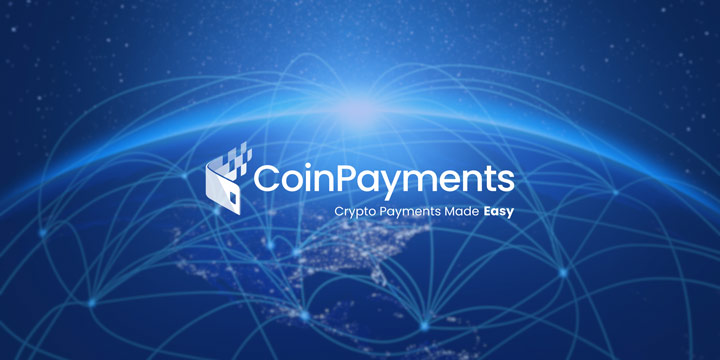Crypto and Web3, the latest digital technology, are weaving a web of possibilities holding immense potential. This article explores the fascinating connection between these two innovative domains and how they influence the world wide web.
Cryptocurrencies, the virtual assets making headlines, have captured the imagination of individuals worldwide. But what exactly are they and how do they relate to the Web3 revolution? Simply put, cryptocurrencies are digital currencies utilizing cryptography for secure transactions and operate on decentralized networks known as blockchains. This decentralized nature ensures transparency, trust and autonomy in financial transactions. The immense popularity of cryptocurrencies like Bitcoin and Ethereum has created a global phenomenon, captivating investors, technology enthusiasts and even traditional financial institutions.
Web3, on the other hand, represents the next stage in the evolution of the world wide web. To understand Web3, let’s journey through the previous iterations. Web1, or the “read-only web,” was primarily focused on static content delivery, lacking interactivity and user-generated content. Then came Web2, the era of social media and dynamic websites, enabling users to engage and contribute to online platforms. However, both Web1 and Web2 were centralized, with power concentrated in the hands of a few technology giants.
Web3 breaks away from this centralized model, embracing decentralization as its guiding principle. It envisions a future where users have greater control over their data, online identities and interactions. Web3 leverages the potential of blockchain technology, harnessing the computing power of a distributed network to enable peer-to-peer transactions and eliminate the need for intermediaries. It promises a more democratic, open and user-centric web, where developers and users collaborate to shape the digital landscape.
Having set the foundation of crypto and Web3, let’s deeply explore how they interconnect and impact the ecosystem.
Changing the World Wide Web with Crypto and Web3
The connection between cryptocurrency and Web3 is nothing short of revolutionary. While cryptocurrencies have been disrupting traditional financial systems, Web3 is re-imagining the fabric of the internet by introducing the decentralized web.
But how do these technologies complement each other?

Simplifying Asset Movement and Governance
Tokenization lies at the heart of the relationship between crypto and Web3. In Web3, tokens represent digital coins on a blockchain. These assets can represent ownership, access rights or participation in decentralized applications (DApps). By tokenizing assets, Web3 enables fractional ownership, liquidity and the democratization of traditionally illiquid assets like real estate or artwork.
Within tokenization, we find two main types:
- Utility tokens
- Governance tokens
Utility tokens provide access to services or products within a specific ecosystem. They act as the fuel powering the decentralized applications on Web3 networks. Conversely, governance tokens represent voting rights in a blockchain platform. This distinction allows for a wide range of use cases and opportunities, catering to different needs within the Web3 ecosystem, like in Forex. Traders can seamlessly transfer or exchange assets across borders using cryptocurrencies or tokens. It also builds auxiliary industries for platforms supporting such Forex services and other crypto-compatible industries (such as iGaming), as demonstrated in the tweet below.
Safeguarding Token Movement in the Decentralized Web
To participate in the crypto-Web3 ecosystem, individuals need a crypto wallet. Crypto wallets serve as digital vaults for securely storing and managing cryptocurrencies. These wallets enable users to secure their private keys for accessing and controlling their digital assets.
Crypto wallets come in different forms.
- Hardware wallets are physical devices offering offline storage and enhanced security. With their sturdy construction and advanced encryption, these wallets provide peace of mind, knowing your digital assets are safe from online threats.
- Software wallets such as mobile or desktop applications provide convenience and accessibility. They allow you to make instant transactions on the go.
- Web-based wallets allow users to access their crypto assets through a web browser.
Individuals can securely store and transact with digital coins in the Web3 ecosystem through crypto wallets. Wallets are essential as users can only access crypto-related services through them.
Smart Contracts and their Role in Web3
Smart contracts are self-executing agreements written in code, allowing for trustless and automatic transactions. Parties can interact directly with each other, removing the need for intermediaries. This eliminates the reliance on centralized authorities, providing a more secure and efficient way of processing transactions. Ethereum, with its robust smart contract capabilities, has become a driving force in decentralized applications adoption and the growth of Web3.

So, what does this mean for the future of the internet?
The marriage of cryptocurrency and Web3 unlocks a world where equal access, transparency and autonomy are no longer just buzzwords. Users can have greater control over their data, identities and online experiences. They can participate in decentralized autonomous organizations (DAOs) operating without a central authority, where decisions are made collectively by token holders. This collaborative approach empowers users, blurring the lines between creators and consumers and paves the way for a more inclusive and equitable digital landscape.
With the rise of Web3 and the increasing adoption of cryptocurrencies, it’s important to explore how these virtual assets are utilized within this decentralized landscape.
Crypto and Web3 Ecosystem Use Cases

Let’s delve into some fascinating use cases of crypto and Web3 ecosystem.
Decentralized Finance (DeFi)
DeFi refers to financial systems built on blockchain eliminating unwanted intermediaries to allow individuals to lend, borrow and trade digital coins directly with each other. It offers transparent and inclusive financial services, providing greater control and access to users while minimizing the need for traditional banking institutions.
Decentralized Lending and Borrowing
Imagine a financial system where you can lend or borrow funds without relying on traditional banks. Well, that’s precisely what DeFi offers. By leveraging smart contract systems, individuals can lend their digital coins to others in exchange for interest or borrow funds using their crypto holdings as collateral.
Automated Market Makers (AMMs)
Another exciting crypto application in Web3 is automated market makers (AMMs). These protocols use algorithms to create decentralized exchanges, allowing users to trade cryptocurrencies directly. Unlike centralized exchanges relying on intermediaries, AMMs enable peer-to-peer trading, ensuring liquidity and reducing the need for third-party involvement.
Additionally, industries like the foreign exchange market benefit from the presence of cryptocurrencies in the market.
Non-Fungible Tokens (NFTs) and Digital Ownership
You’ve probably heard about NFTs and the buzz surrounding digital art and collectibles. NFTs are unique tokens representing the ownership of virtual assets, such as artwork, music or virtual real estate. Through blockchain technology, NFTs provide proof of authenticity and allow creators to monetize their digital creations directly.
Governance and DAOs
Crypto and Web3 are reshaping organization governance. Decentralized autonomous organizations (DAOs) are entities operating based on smart contract systems and community voting. They enable stakeholders to participate in decision-making, vote on proposals and contribute to project development. DAOs offer transparent and inclusive governance models by removing centralized authorities.
Supply Chain Management and Traceability
Tracking the journey of products and ensuring their authenticity has always been a challenge; however, blockchain technology is now transforming supply chain management systems. By recording each step of a product’s lifecycle on a distributed ledger, stakeholders can verify its origin, monitor its movement and ensure its integrity. This provides transparency, reduces fraud and promotes ethical business practices.
Cryptocurrency and Web3 influence interactions with financial systems, virtual assets and organizational structures. The only difference is in asset ownership, where individuals have greater control over their assets, eliminating the need for intermediaries and relying on their servers.
As we continue to explore the possibilities of Web3 and the integration of cryptocurrencies, it’s exciting to witness the power of decentralization and how it’s reshaping various industries.
The next section discusses challenges and future perspectives surrounding this innovative ecosystem.
What Lies Ahead for Crypto and Web3
In the last few years, we’ve seen blockchain transform the digital world. What must the ecosystem overcome to establish the new world wide web era?

Scalability Issues from Network Congestion
With more users and transactions processed on the blockchain, the strain on the network can lead to congestion and slower transaction times. But what solutions are being explored to address this issue?
Various projects are looking into Layer 2 solutions, such as the Lightning Network for Bitcoin and Ethereum’s proposed Ethereum 2.0 upgrade. These solutions aim to improve scalability by offloading some of the transaction processing to secondary networks, reducing the burden on the main blockchain. By doing so, they can enhance the speed and efficiency of cryptocurrency transactions, making them more suitable for everyday use.
Regulatory Uncertainties and Legal Challenges
Governments and regulatory bodies are grappling with how to classify and regulate cryptocurrencies, Initial Coin Offerings (ICOs) and other crypto-related activities. What impact does this have on the whole system?
While various countries have embraced cryptocurrencies and enacted clear regulations, others are still formulating their stance. The lack of regulatory clarity presents difficulties for businesses and individuals exploring crypto trading. However, as governments and regulatory bodies continue to learn and understand the technology and its potential, we can expect to see more comprehensive regulations balancing innovation and consumer protection.
Adoption Hurdles Hindering Market Dominance
To reach mainstream adoption, user experience plays a crucial role. Currently, the user interfaces of many decentralized applications (DApps) are often complex and unintuitive, making it challenging for non-technical users to navigate and utilize these platforms effectively. So, how can we overcome these hurdles?
Improving the user experience through better design and intuitive interfaces is a focus area for developers and designers. Projects are working on creating user-friendly wallets, streamlined onboarding processes and seamless interactions with DApps.
Potential Solutions to Advance Web3 and Future Predictions
To address the challenges faced by crypto and Web3, various potential solutions and technological advancements are being explored. Innovations such as sharding, sidechains and interoperability protocols aim to enhance scalability and reduce network congestion. Regulatory sandboxes and frameworks are being developed to provide a controlled environment for testing and implementing crypto-related projects.
How do such advancements contribute to the future of crypto and Web3?
These solutions and advancements demonstrate the ongoing commitment of the crypto community to overcome obstacles and push the boundaries of this new technology. By finding ways to improve scalability, tackle regulatory challenges and enhance user experience, we can foster the widespread adoption of crypto and Web3, unlocking their true potential.
So, what lies ahead for cryptocurrency and Web3 once all these challenges are in the past? Will cryptocurrencies become a common medium of exchange? How will Web3 reshape traditional systems?
The future of crypto and Web3 appears promising. As scalability and regulatory frameworks improve, more industries will integrate crypto and Web3 solutions.
Moreover, with improved user experience, more people will warm up to cryptocurrency and Web3. The potential for DeFi, digital ownership through NFTs and transparent governance systems through DAOs is immense.
While challenges exist, the connection between crypto and Web3 holds great promise. Addressing existing challenges will help in the advancement and adoption of these technologies.
Present and Future Cryptocurrency Payments in Web3
One crucial aspect of the connection between crypto and Web3 is cryptocurrency payments within this decentralized web ecosystem. As we delve into the present and future of these payments, one platform deserving your attention is CoinPayments.

CoinPayments, the leading cryptocurrency payment gateway, offers a convenient solution for businesses and individuals looking to embrace the power of digital currencies. With its user-friendly interface and wide range of supported cryptocurrencies, CoinPayments simplifies the payment process in crypto.
Supporting over 2000 cryptocurrencies, with 100+ different crypto accepted in one business account, CoinPayments ensures businesses meet their growing client expectations. This diversity enables businesses to cater to a global audience and provides individuals with the freedom to transact using their preferred digital currencies.
Since 2013, CoinPayments has created trusted client relationships. From instant and secure transactions to industry-low processing fees starting at just 0.5%, CoinPayments will help your business flourish.
Did you find the connection between crypto and Web3 interesting?
For more educational resources, visit CoinPayments Media.





